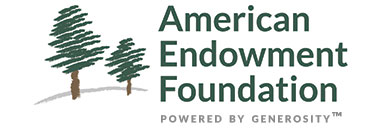How DAFs Help Clients and Charities During Market Uncertainty
Submitted by American Endowment Foundation on May 15th, 2023Whenever there is uncertainty or volatility in the markets, non-profit organizations worry that donations will drop. The number of donors overall has continued to decrease in the past few decades, yet fortunately bigger donors remain generous so overall giving has remained fairly stable. The Giving USA annual publication in June will soon provide insight into last year’s giving. Should the markets drop and inflation remain high this year, concern among the charities will increase, especially if these conditions remain late this year during the busiest giving season.

On a positive note, we’ve seen that during difficult markets and various crises over the past 30 years, donors who had established and contributed to Donor-Advised Fund (DAF) accounts were able to maintain their level of granting. AEF donors significantly increased their grants during the market drop when Covid first spread in spring of 2020, and they continued their generous grantmaking in 2021 and again in 2022 when they recommended grants totaling nearly $1 billion.
Especially in the past several years, many donors have bunched their contributions to their DAF accounts when their income has been high, their investments have increased, or as they’ve approached retirement. This bunching trend has continued in recent years as their advisors have explained how this will help them provide consistent levels of support to charities once they have retired, when their income or investments decline, or when their businesses are not as profitable.
During periods of challenging markets and inflation, clients who have a DAF can take comfort in knowing that they’ll still be able to provide ongoing grants to charities that mean so much to them. Charities welcome grants from DAF donors as these were very helpful in keeping their doors open during the past few difficult years. It is difficult for donors who have not established a DAF to tell a charity that they are decreasing or eliminating their gift, and hard for organizations to hear that news. Fortunately, most DAF donors do not need to deliver bad news since they set aside funds in DAF accounts that can only be used for grantmaking, which enables them to remain consistent in the amounts they give.
Many donors today still have highly appreciated publicly-traded securities or funds that they can contribute. Others have the ability to donate illiquid assets that have increased in value such as real estate, privately held stock or limited partnership interests. These donors often do not want to donate these significant assets at one time directly to individual charities, and instead establish DAF accounts. This allows them to receive the tax deduction upfront, make grants over time to these charities, and avoid a situation in which they donate the entire amount to a charity that may change its mission, lose a key leader, or may not be able to effectively utilize a large and sometimes unanticipated donation.
When onboarding new clients during market uncertainty, some advisors encourage them to donate appreciated securities that are no longer a good investment to fund a DAF account. Once donated, the advisors can then select new investments that are a better fit for the DAF account. Others have clients donate unmanaged assets into the DAF so the advisors can then re-invest and manage these new DAF assets.
Philanthropic clients may not reach out to their advisors during market downturns to discuss charitable giving, but they would be receptive to advisors’ ideas or suggestions about ways in which they can continue to provide ongoing generous support. By proactively discussing charitable giving, advisors can deepen these relationships and talk about a positive subject instead of the decline in the markets. This conversation helps not just the clients but also the charities that they care deeply about.
Sometimes market volatility can be the impetus for clients to open DAF accounts, as they realize that they should have listened to their advisors and opened the accounts previously. Had they done so, they would have already donated and set aside assets for charitable giving.
Creating and funding DAF accounts enables donors to make grants to their favorite charities both now and in the future and during good economic times and bad. There have been proposals and legislative efforts to regulate and thereby complicate charitable giving over the past decade, but many non-profit organizations have opposed these since grants from DAF donors have been invaluable to them during challenging times.

